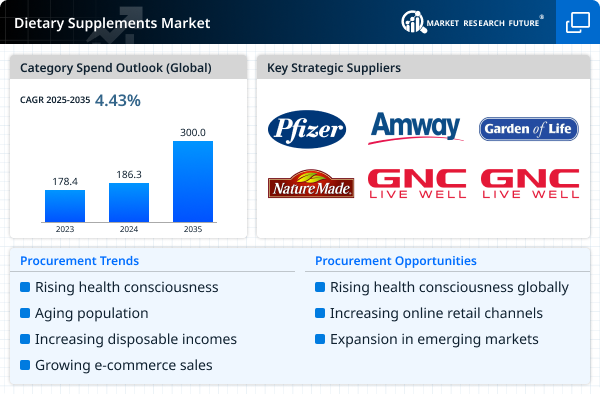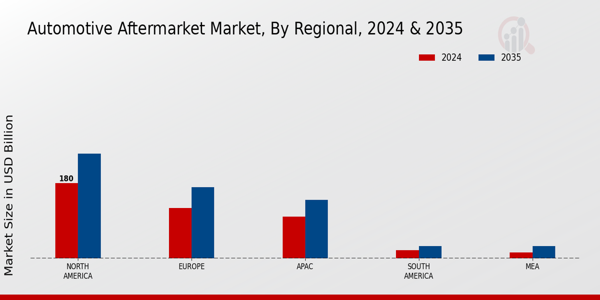Market Analysis
Automotive Aftermarket (Global, 2024)
Introduction
The motor industry aftermarket is a dynamic and ever-changing sector within the overall industry, and is characterized by a broad range of products and services for the repair, maintenance, and improvement of vehicles after they have been manufactured. The aftermarket is experiencing a major transformation, prompted by technological advances, changing legislation, and the increasingly widespread integration of digital solutions. The aftermarket is the essential link in the chain that ensures the longevity and performance of a vehicle. The rise of electric vehicles and the growing focus on smart technology are also transforming the aftermarket, which is forcing both traditional players and new entrants to constantly develop their products and services. To be able to grasp the opportunities and threats of this sector, it is vital for all the players to understand its complexity.
PESTLE Analysis
- Political
- In 2024 the aftermarket is influenced by a number of political factors, such as the regulations of the governments for the improvement of the safety and emanation standards of the automobile. For example, the European Union has ruled that by 2024 all new cars must meet the new emission standards of EURO 7, which will reduce nitrogen oxides by 35 % and particulates by 50 %. These regulations force the aftermarket suppliers to adapt their products to the new requirements, which has a direct influence on their business strategies and product offerings.
- Economic
- In 2024, the economic situation of the car aftermarket is characterized by the growth of the household budget and the increase in vehicle ownership. The annual average household expenditure on the maintenance and repair of automobiles has increased by 10 percent, according to the latest data, to about ten thousand yuan. The number of cars on the road is rising, and the total number of registered vehicles has exceeded 270 million. This is a big market for the aftermarket.
- Social
- The social trends in 2024 indicate a trend towards greater concern for the environment and greater sensitivity to the environment among consumers in the aftermarket. Surveys show that 65% of consumers are willing to pay a premium for environment-friendly products, such as biodegradable cleaning products and recycled parts. The rising popularity of electric vehicles is also influencing the consumers' choice, and by the end of 2024, the electric vehicle share in the U.S. market is expected to be 30 %, which will have a great influence on the aftermarket in order to respond to the needs of this growing segment.
- Technological
- In 2024, technological advances are transforming the aftermarket, especially through the integration of digital tools and platforms. Telematics and connected cars are increasingly in use, with some 50 million vehicles in the United States alone equipped with such systems. Real-time diagnostics and remote diagnostics enable the aftermarket to offer faster, more tailored services, thereby increasing both customer satisfaction and the quality of its own operations.
- Legal
- The legal regulations affecting the automobile aftermarket in 2024 will mainly consist of safety and environment regulations. In 2023 the National Highway Traffic Safety Administration (NHTSA) issued new regulations that all aftermarket parts must meet certain safety standards. Failure to comply with the regulations will result in a fine of up to $100,000 per offense. The law will require the aftermarket industry to have all its products tested and certified. This will increase operating costs, but also increase product reliability and consumer confidence.
- Environmental
- The growing importance of the environment in the field of after-sales service in 2024. The world's growing concern for the environment has led to stricter waste management regulations. The European Union's Waste of Electric and Electronic Equipment (WEEE) Directive requires that at least 85% of car waste be recycled or reused. This law has forced after-sales service companies to adopt more sustainable practices, such as the reuse of old parts and the reduction of waste. These practices are not only beneficial for the environment, but also for the growing number of consumers who are aware of the environment.
Porter's Five Forces
- Threat of New Entrants
- The threat of new entrants to the car aftermarket is moderate. The threat of new entrants to the car aftermarket in 2024 is moderate. The market is lucrative, but the established players have strong brand loyalty and distribution networks that are difficult for new entrants to penetrate. Also, regulatory requirements and the need for technical expertise can act as barriers to entry. However, technological developments such as the growth of e-commerce and digital platforms will over time lower these barriers.
- Bargaining Power of Suppliers
- The suppliers of the motor trade are generally not well positioned in the market. The market is characterized by a large number of suppliers offering a wide range of spare parts and accessories, which reduces the influence of individual suppliers. In addition, many of the aftermarket products are standardized, which makes it easy for the manufacturer and the trade to change suppliers and therefore weakens the power of the suppliers.
- Bargaining Power of Buyers
- In the aftermarket, the buyers have high bargaining power because of the abundance of the choice. Brands and products compete with each other and consumers can easily compare prices and quality. In addition, the rise of e-commerce has increased the bargaining power of buyers.
- Threat of Substitutes
- The threat of substitution in the aftermarket is moderate. There are, of course, alternatives to car ownership, such as public transport or ride-hailing services, which reduce the need for car maintenance. But the need for repairs and maintenance will continue to ensure a steady demand for aftermarket products. In the long run, however, developments in the electric vehicle and alternative mobility solutions could be a threat.
- Competitive Rivalry
- The competition in the car parts industry is very high, with many companies competing for the same market. There are both old and new brands. The companies are constantly improving their products and services in order to attract customers. This has resulted in the use of aggressive marketing and price strategies, which has intensified competition.
SWOT Analysis
Strengths
- Established distribution networks and supply chains.
- Diverse product offerings catering to various vehicle types.
- Strong brand loyalty among consumers for aftermarket parts.
- Technological advancements in automotive repair and maintenance.
- Growing trend of DIY repairs among vehicle owners.
Weaknesses
- Dependence on the economic cycle affecting consumer spending.
- Challenges in maintaining quality control across various suppliers.
- Limited awareness of aftermarket options among some consumers.
- High competition leading to price wars and reduced margins.
- Potential for counterfeit products affecting brand reputation.
Opportunities
- Expansion into electric vehicle (EV) aftermarket services.
- Increased demand for vehicle customization and personalization.
- Growth in online sales channels and e-commerce platforms.
- Rising awareness of sustainability and eco-friendly products.
- Partnerships with automotive manufacturers for original equipment parts.
Threats
- Intense competition from OEMs entering the aftermarket space.
- Economic downturns impacting consumer spending on non-essential repairs.
- Rapid technological changes requiring constant adaptation.
- Regulatory changes affecting product standards and compliance.
- Supply chain disruptions impacting availability of parts.
Summary
The 2024 after-market for automobiles will be characterized by a strong distribution network and brand loyalty, but will also be challenged by economic dependence and competition. Opportunities lie in the burgeoning EV sector and in e-commerce, while threats include competition from the original equipment manufacturers and regulatory changes. Strengths and weaknesses must be addressed in order to exploit emerging trends and manage risks.





Leave a Comment